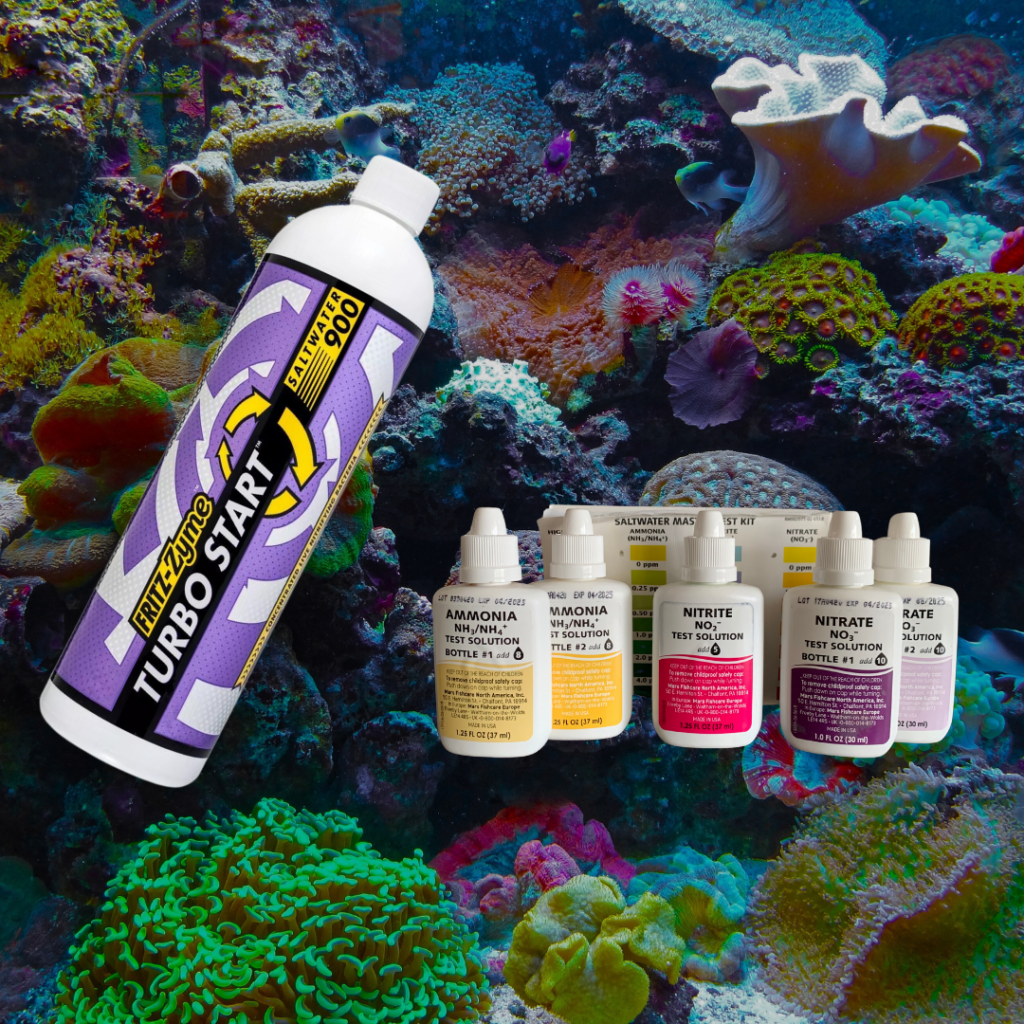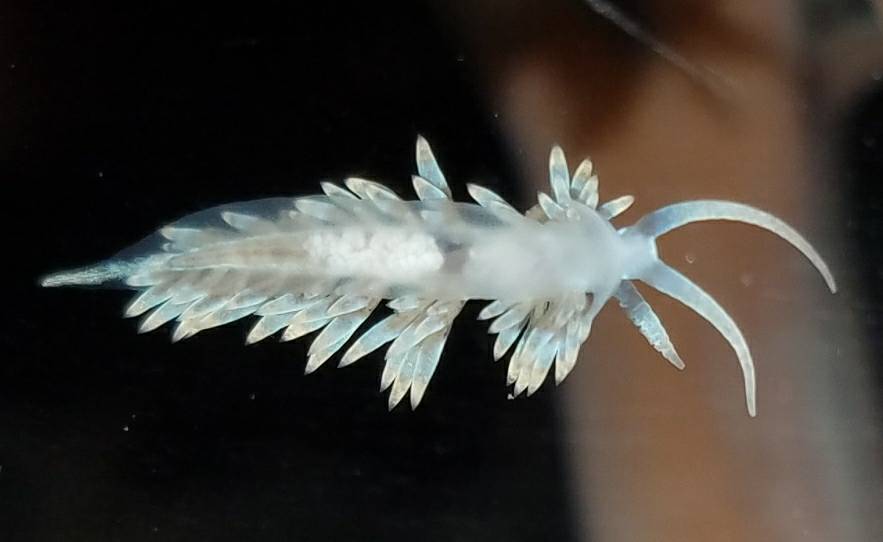Cycling a saltwater tank is a crucial step in establishing a healthy aquarium environment. It can often take weeks to complete, but with the right approach, you can cycle a tank in 24 hours. In this blog post, we’ll guide you through the process of how to cycle a tank in 24 hours, discuss the importance of cycling, and provide useful resources to help you along the way.
the Importance of Cycling
Cycling a tank is essential for establishing a healthy ecosystem within your aquarium. The process involves the growth of beneficial bacteria that convert toxic ammonia, produced by fish waste and decaying organic matter, into less harmful substances like nitrite and nitrate. This process, known as the nitrogen cycle, is vital for maintaining a stable environment for your aquarium’s inhabitants.
What You’ll Need
To cycle your tank in 24 hours, you’ll need the following items:
- A suitable aquarium with proper filtration, heating, and lighting
- Live rock or ceramic media for surface area to house beneficial bacteria
- High-quality source water (preferably RO/DI)
- Nitrifying bacteria starter product
- Ammonia source (fish food or pure ammonia)
- Aquarium test kits for ammonia, nitrite, and nitrate
Steps to Cycle a Tank in 24 Hours

1. Prepare Your Tank and Equipment
Before starting the 24-hour cycling process, make sure your tank is adequately set up and all equipment, such as filtration systems, heaters, and powerheads, are in place and functioning properly. Ensure your tank is filled with saltwater mixed to the appropriate salinity level. Additionally, having live rock or sand in your aquarium can help jumpstart the cycling process by providing a surface for beneficial bacteria to colonize.
2. Use a Bacterial Starter Product
To cycle a tank in 24 hours, you’ll need to use a bacterial starter product, which contains live nitrifying bacteria necessary for the nitrogen cycle. Several high-quality bacterial starters are available on the market, such as Dr. Tim’s One and Only Nitrifying Bacteria or FritzZyme TurboStart 900. These products can significantly speed up the cycling process and help establish a stable biological filter in your saltwater tank.
3. Add Ammonia Source
Introduce an ammonia source to your tank to begin the nitrogen cycle. You can use pure ammonia, fish food, or even a sacrificial fish, although the latter is not recommended due to ethical concerns. When using pure ammonia, aim for a concentration of 2-4 ppm (parts per million). This will provide enough ammonia for the nitrifying bacteria to consume and multiply, kickstarting the nitrogen cycle.
4. Test Your Water Parameters
Throughout the 24-hour cycling process, monitor your water parameters using test kits or electronic meters. You should test for ammonia, nitrite, and nitrate levels to track the progress of the nitrogen cycle. Ideally, you should see ammonia levels drop, nitrite levels rise and then fall, and nitrate levels increase. This indicates that the nitrifying bacteria are processing the ammonia and nitrite, converting them into less harmful nitrates. Learn more about the saltwater nitrogen cycle.
5. Maintain Optimal Conditions
To help facilitate the rapid cycling process, maintain optimal conditions in your tank. Keep the water temperature between 75-80°F (24-27°C) and ensure proper water circulation to provide oxygen for the bacteria. Additionally, maintain the pH between 7.8 and 8.4 for saltwater tanks, as nitrifying bacteria thrive within this range.
6. Perform a Water Change
After 24 hours, if your ammonia and nitrite levels have dropped to zero or near-zero and nitrate levels are present, your tank has successfully cycled. Perform a water change of around 20-30% to help reduce the nitrate levels and further stabilize the tank environment.
7. Introduce Livestock Gradually
Now that your tank has cycled in 24 hours, you can begin adding marine life to your aquarium. Start by introducing hardy fish and invertebrates first, as they are more forgiving of any fluctuations in water parameters. Gradually add more sensitive species over time, ensuring that your tank remains stable and healthy.
Common Mistakes to Avoid when cycling your tank

When attempting to cycle your tank in 24 hours, it’s essential to avoid some common mistakes that can hinder your success:
- Overloading the tank with ammonia: Adding too much ammonia can cause a toxic environment, making it difficult for beneficial bacteria to establish themselves.
- Inadequate aeration: Proper water circulation and aeration are crucial for providing the necessary oxygen for nitrifying bacteria to thrive.
- Using an unsuitable bacterial starter product: Ensure you choose a high-quality product that contains live nitrifying bacteria to speed up the cycling process.
How to tell when your tank is finished cycling
Once your tank has successfully cycled, you should observe the following signs of a healthy aquarium:
- Clear water: This indicates that the bacterial colonies have effectively processed waste and excess nutrients.
- Stable water parameters: Consistent levels of ammonia, nitrite, and nitrate are crucial for maintaining a healthy environment.
- Active, healthy fish and invertebrates: Your tank’s inhabitants should display normal behavior, vibrant colors, and a healthy appetite.
Troubleshooting Issues During the 24-Hour Cycling Process
If you encounter any issues during the 24-hour cycling process, consider the following troubleshooting tips:
- Stalled ammonia or nitrite levels: If your ammonia or nitrite levels remain high, try adding more bacterial starter product or adjust your ammonia source.
- Cloudy water: Cloudiness can be caused by a bacterial bloom or suspended particles. Ensure proper filtration and consider using a water clarifier if necessary.
- Lingering odors: An unpleasant smell may indicate decaying organic matter or excess waste. Regularly clean your tank and remove any debris to maintain a healthy environment.
Additional Resources and Support
For more guidance and support, consider exploring the following resources:
- Online forums: Engage with seasoned hobbyists on platforms like Reef Central and Nano-Reef for valuable insights and advice.
- Informative articles: Read our other articles on ReeferWiki for comprehensive articles on topics such as the saltwater nitrogen cycle and the duration of cycling a saltwater tank.
- Local fish stores and clubs: Network with knowledgeable aquarists in your community to receive tailored advice and support.
Ongoing Aquarium Maintenance and Care
After completing the cycling process, it’s crucial to maintain proper aquarium care to ensure a thriving environment for your marine life:
- Regular water changes: Perform routine water changes to remove excess nitrates and maintain water quality.
- Equipment maintenance: Regularly clean and inspect your filtration system, heater, and powerheads to ensure optimal performance.
- Proper feeding practices: Avoid overfeeding your fish and invertebrates, as excess food can contribute to water quality issues.
Final Thoughts

Cycling a saltwater tank in 24 hours is an achievable goal with the right approach and tools. By understanding the importance of the nitrogen cycle and following the steps outlined in this guide, you can establish a healthy and stable environment for your aquarium inhabitants in a short period of time.
Remember to always monitor your water parameters and maintain optimal conditions for your marine life to thrive. For more information on the saltwater nitrogen cycle and tank cycling, check out ReeferWiki’s articles on the saltwater nitrogen cycle and how long it takes to cycle a saltwater tank. With patience and dedication, you’ll be well on your way to enjoying a beautiful and vibrant saltwater aquarium.



